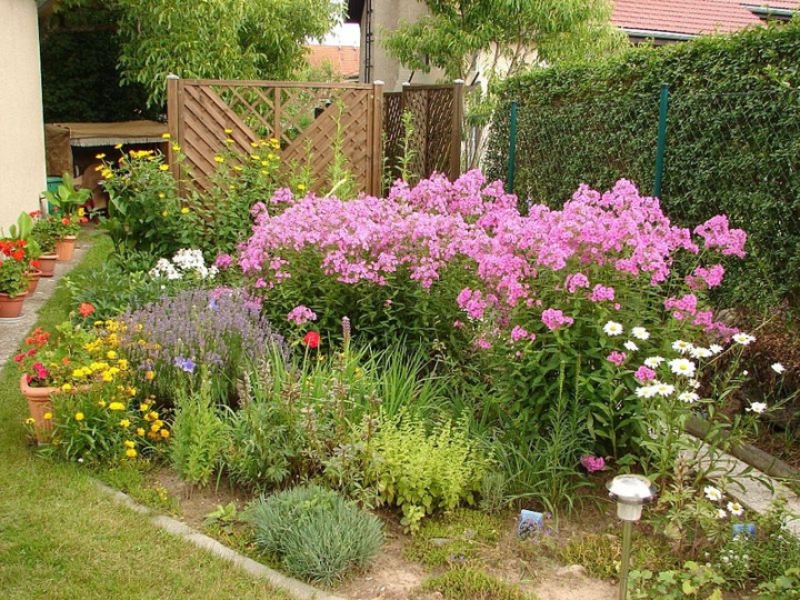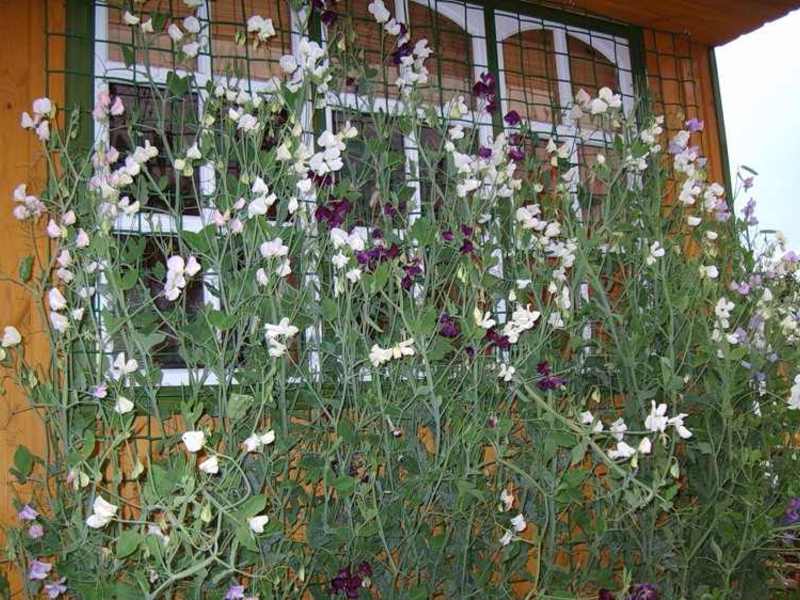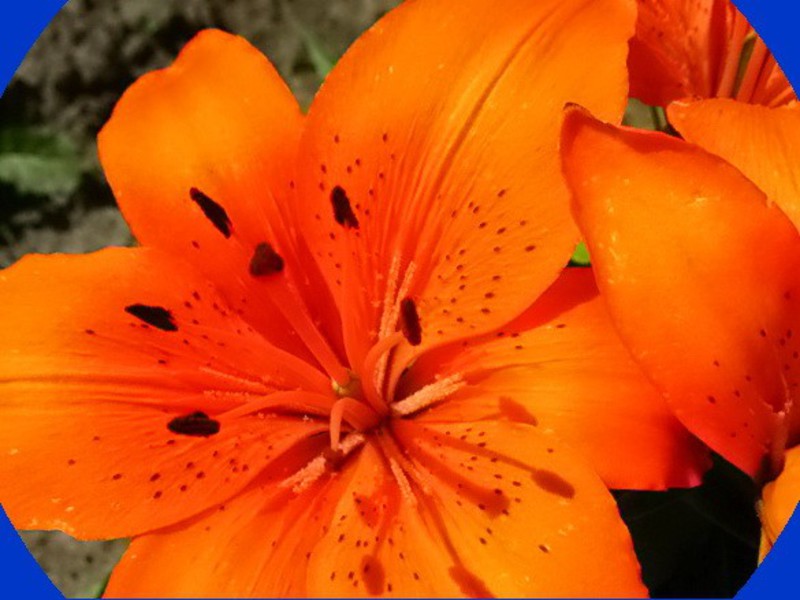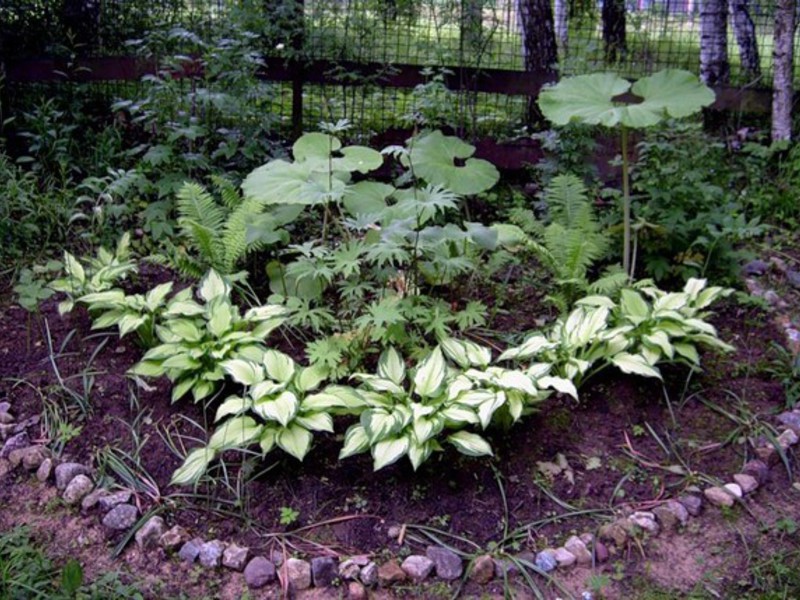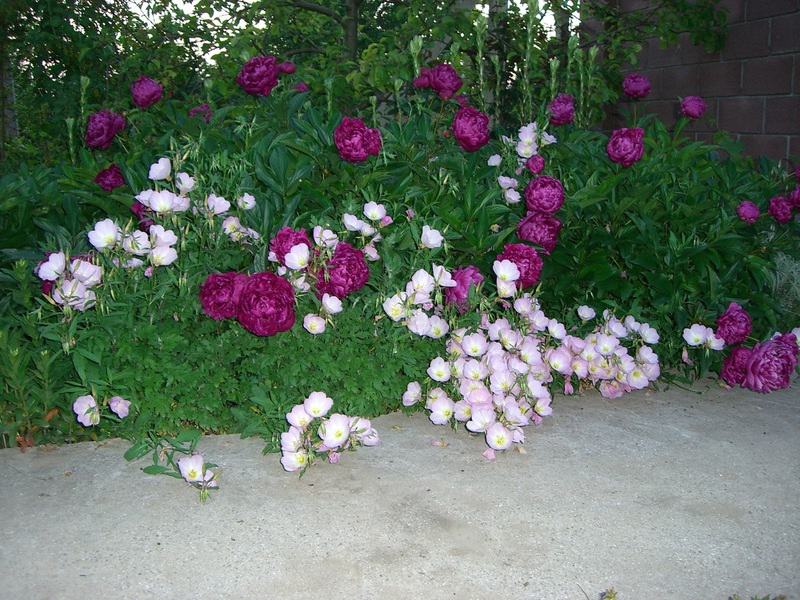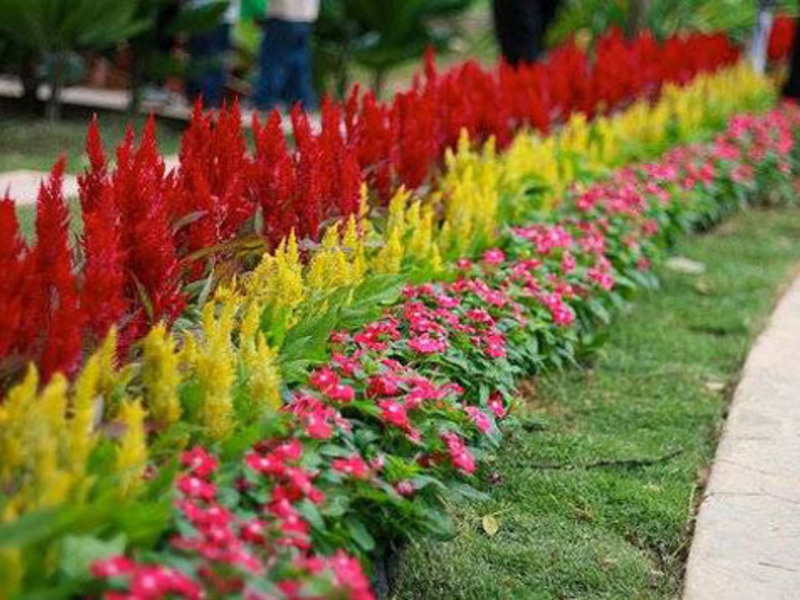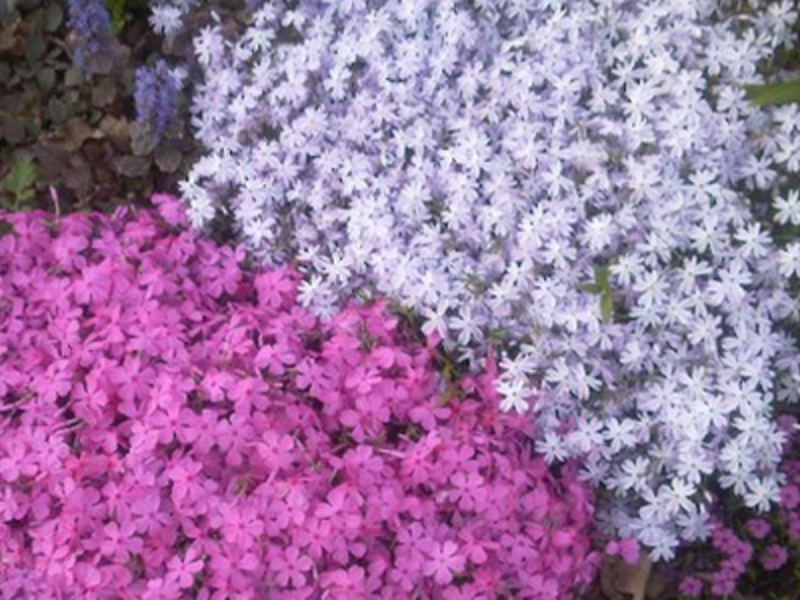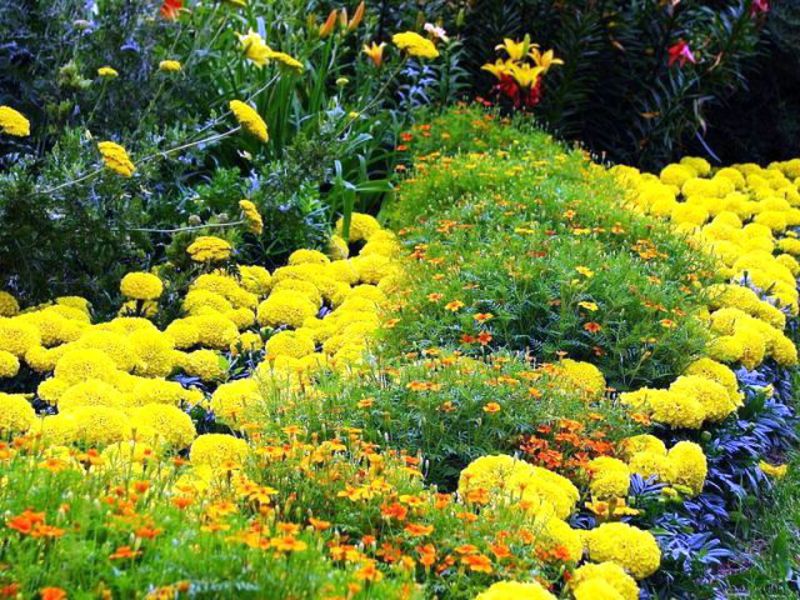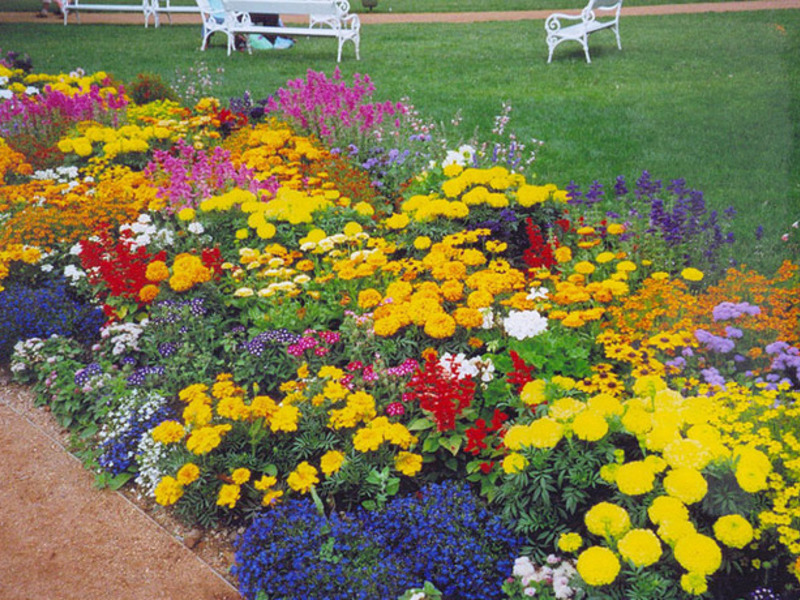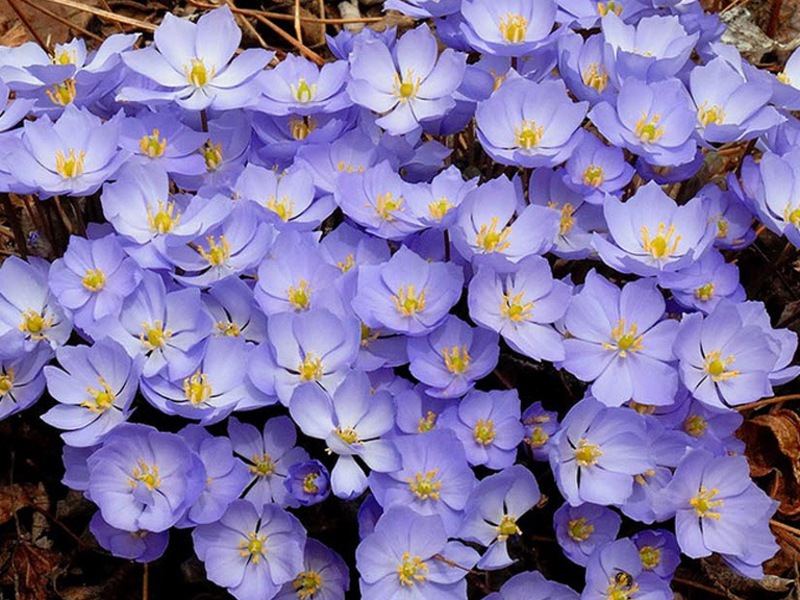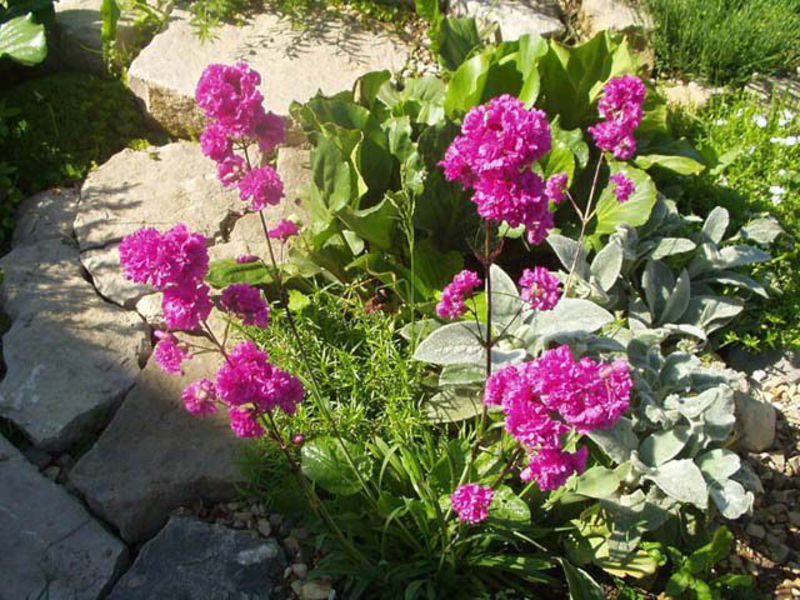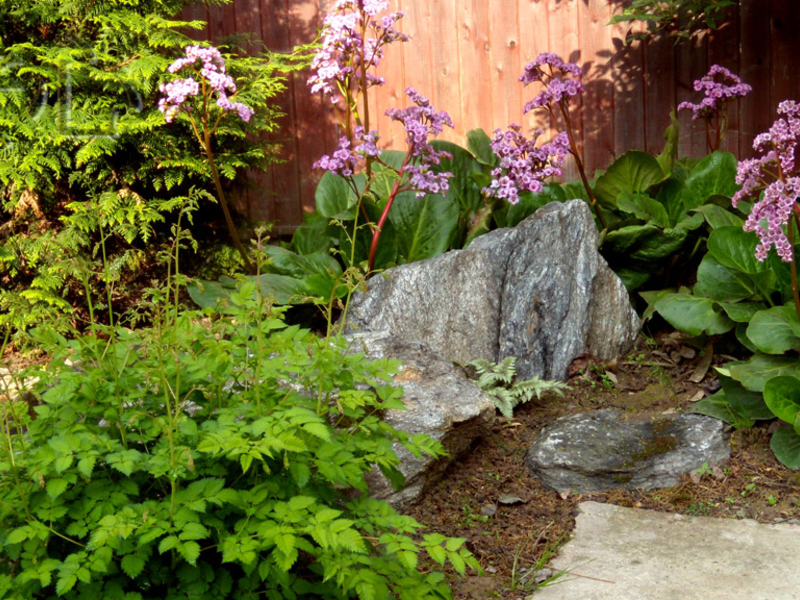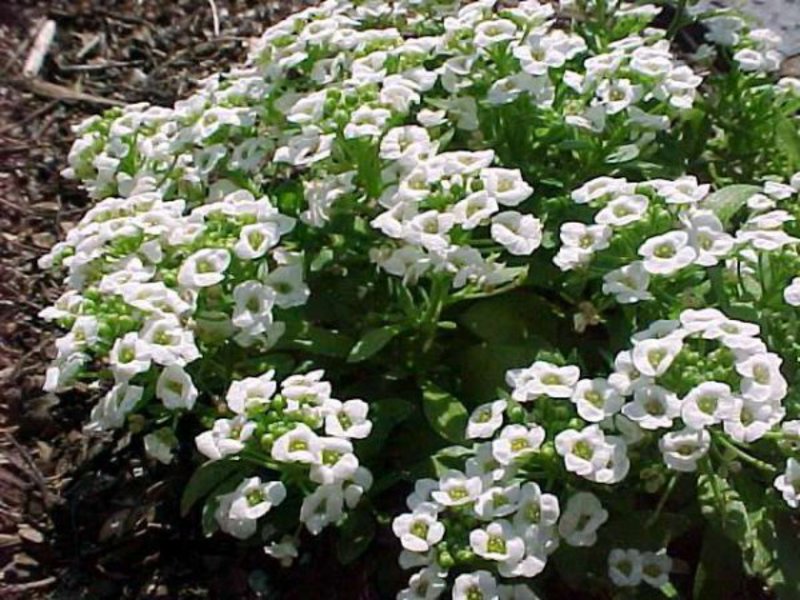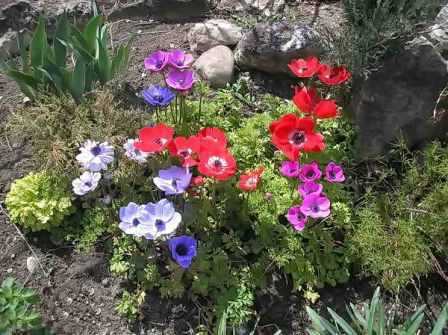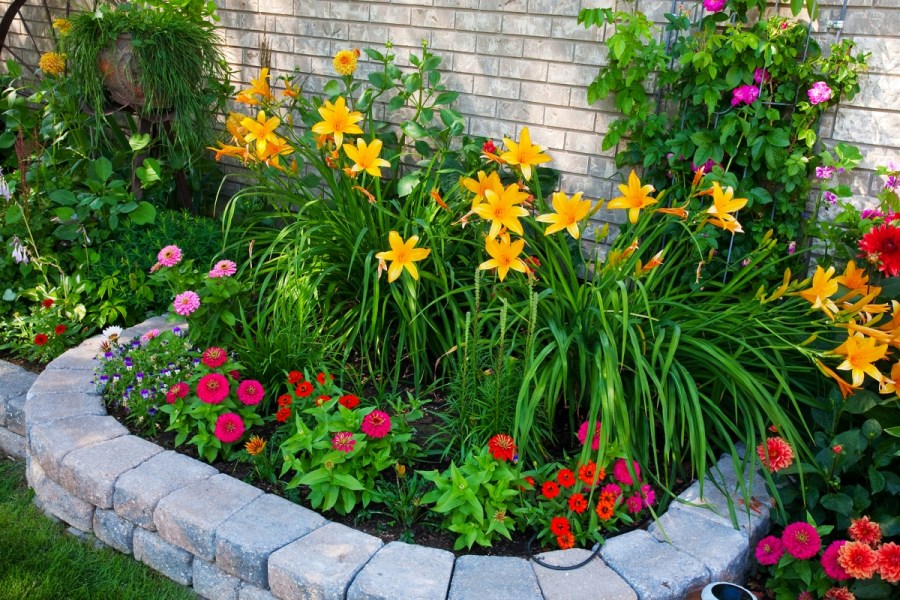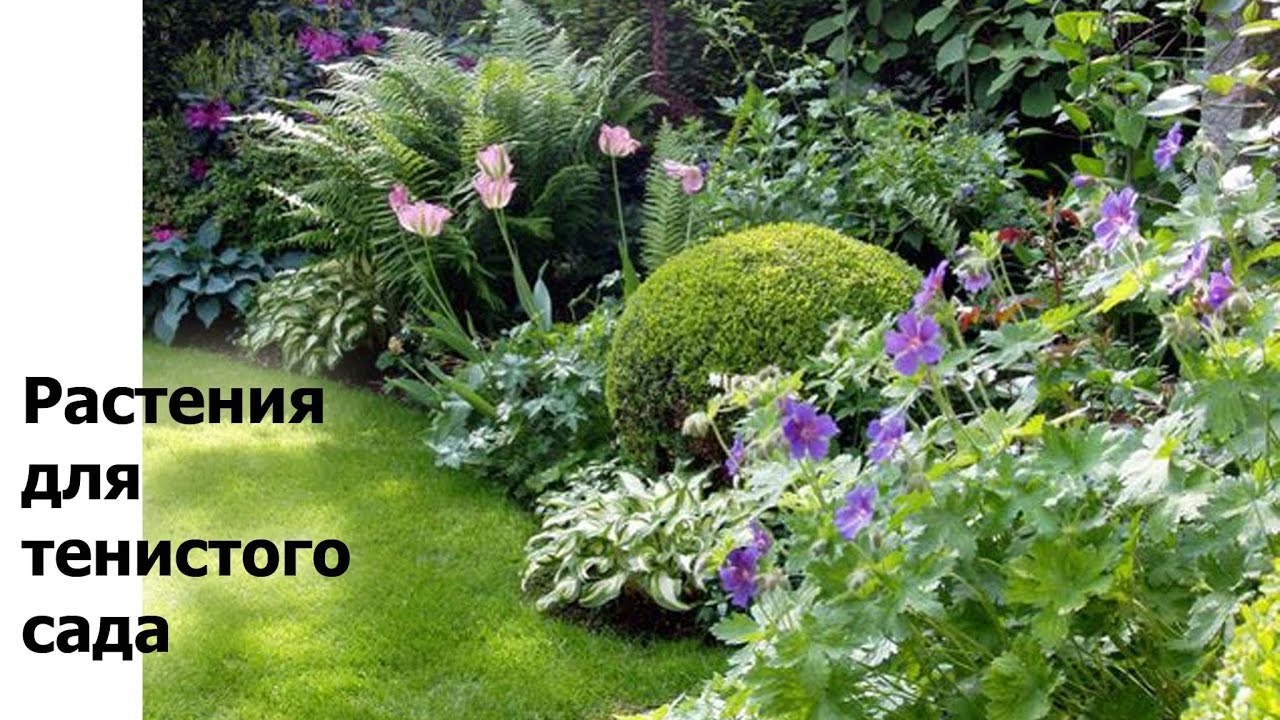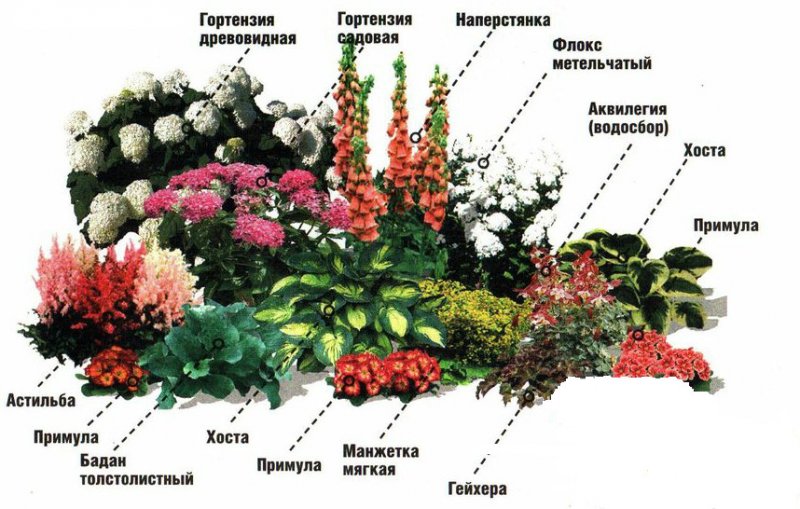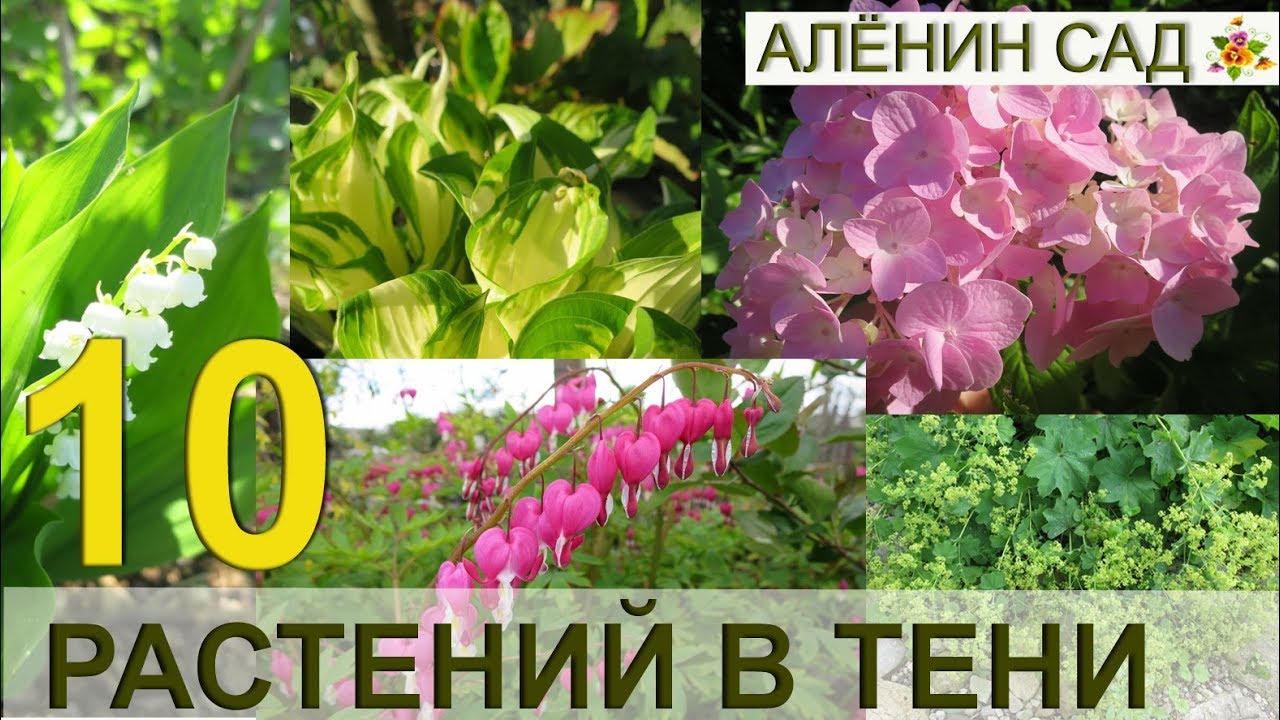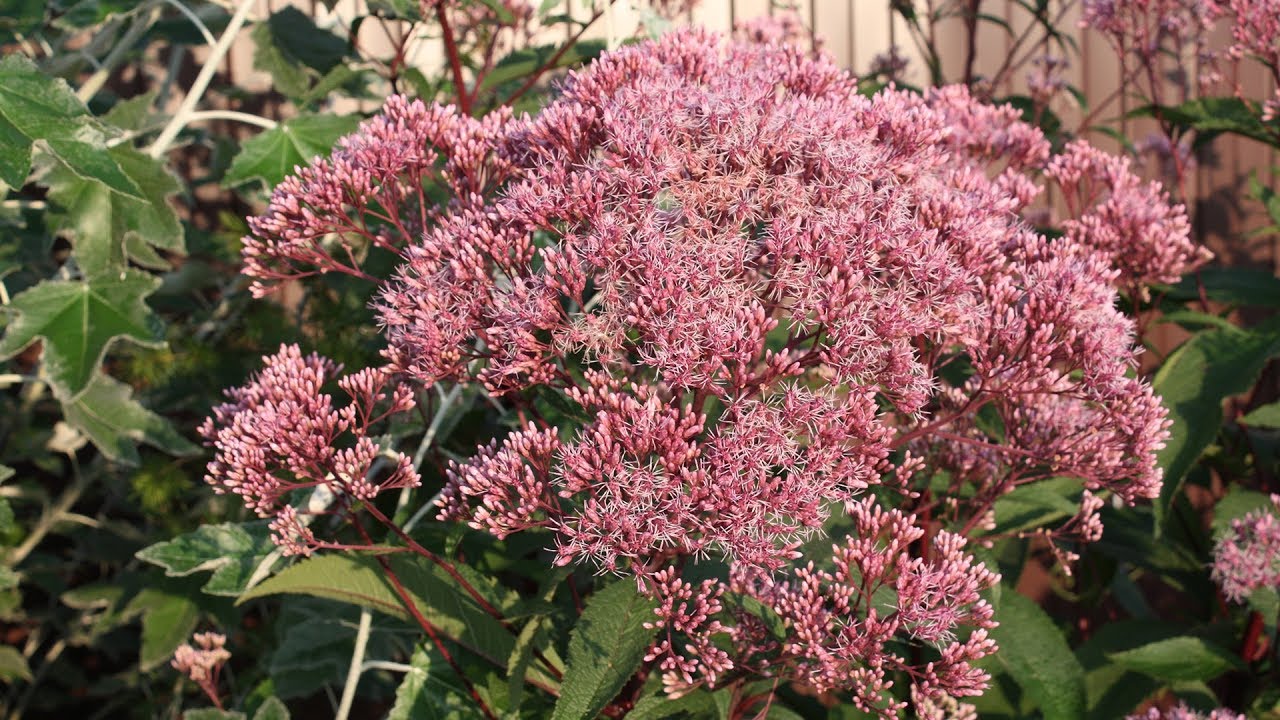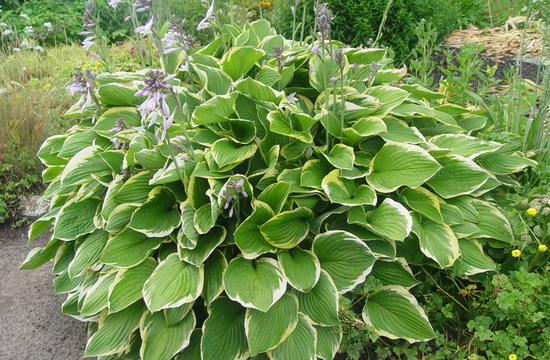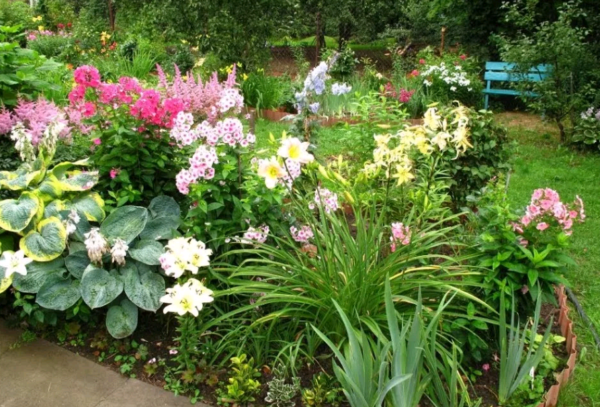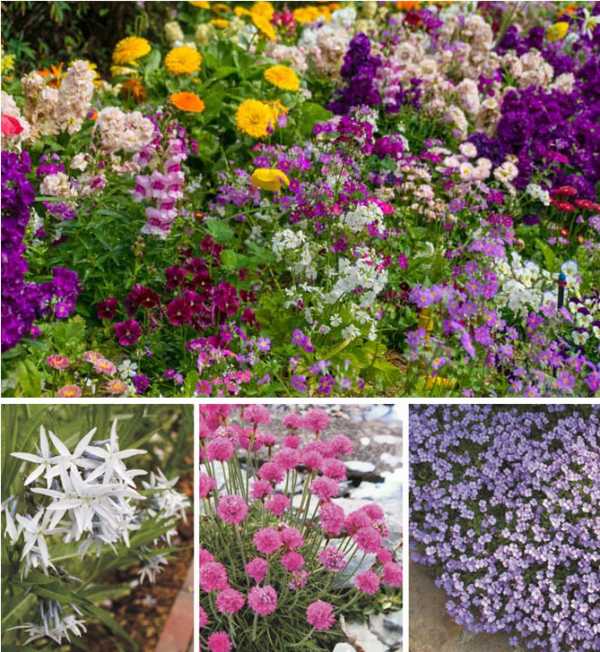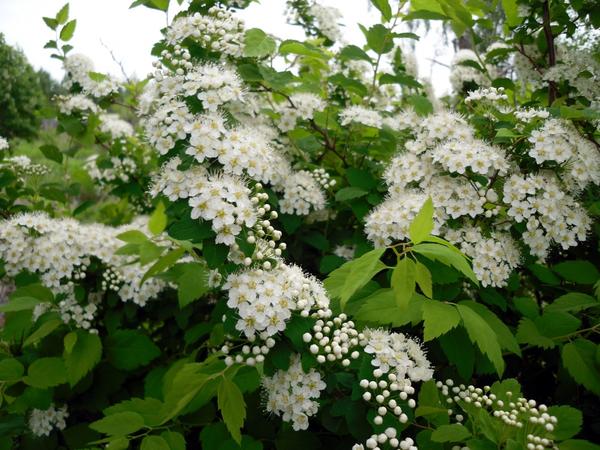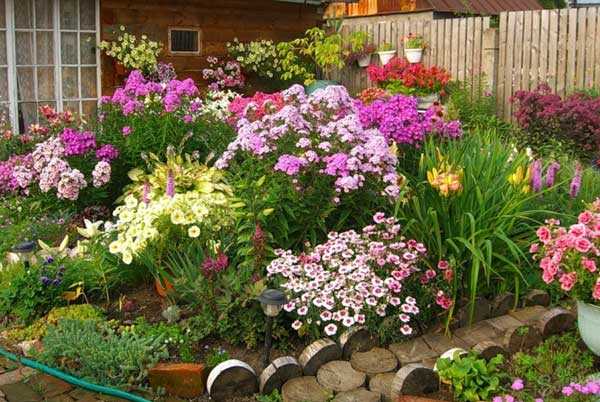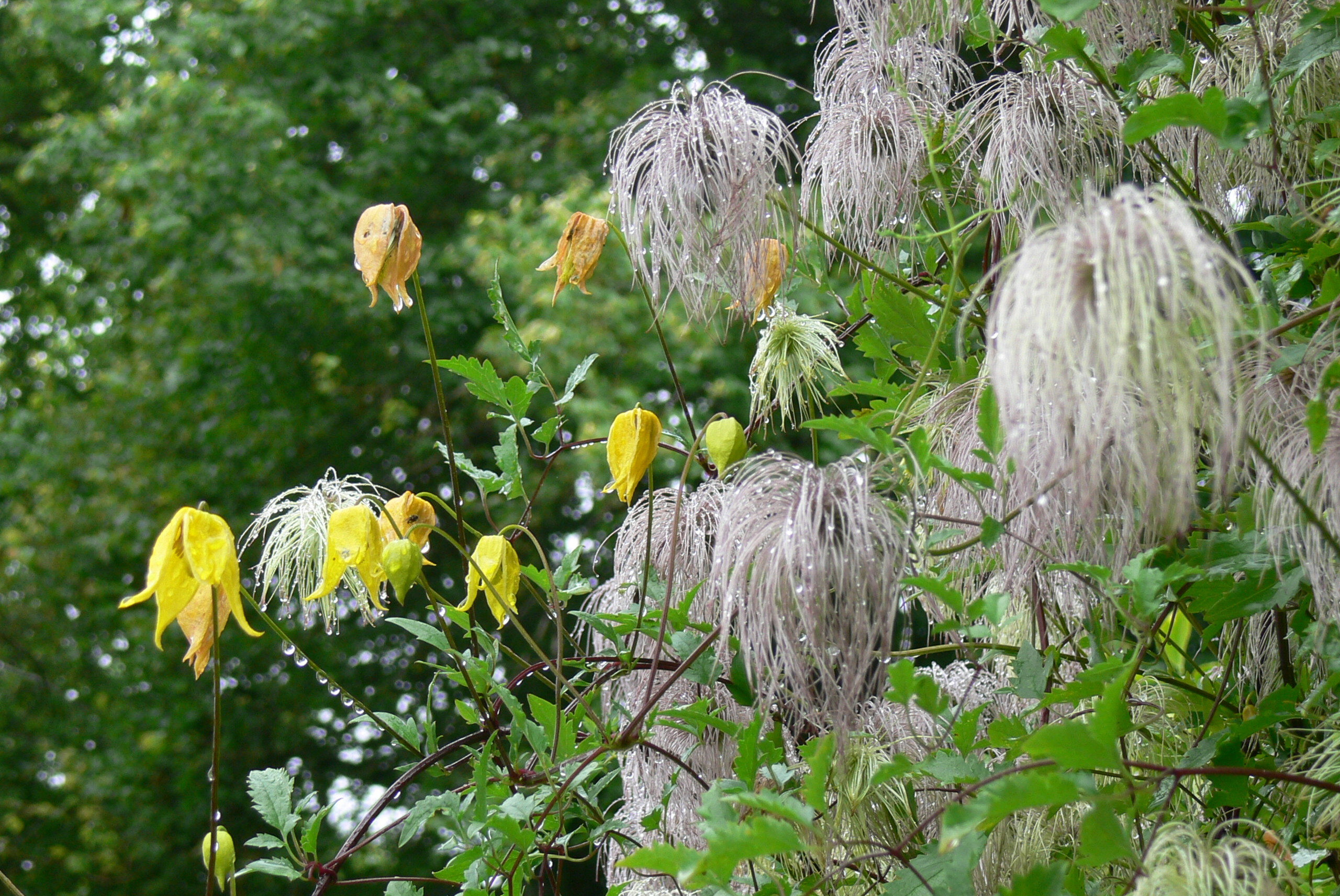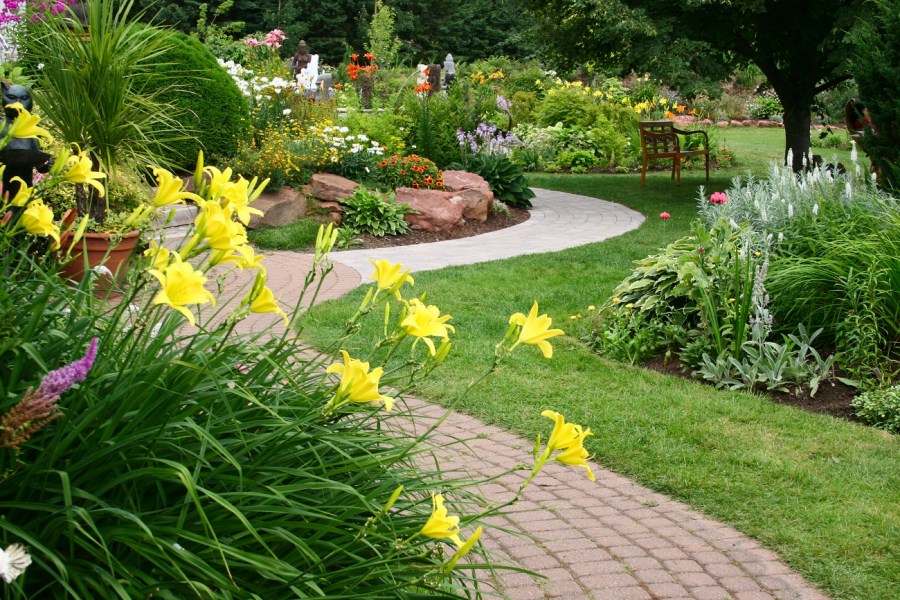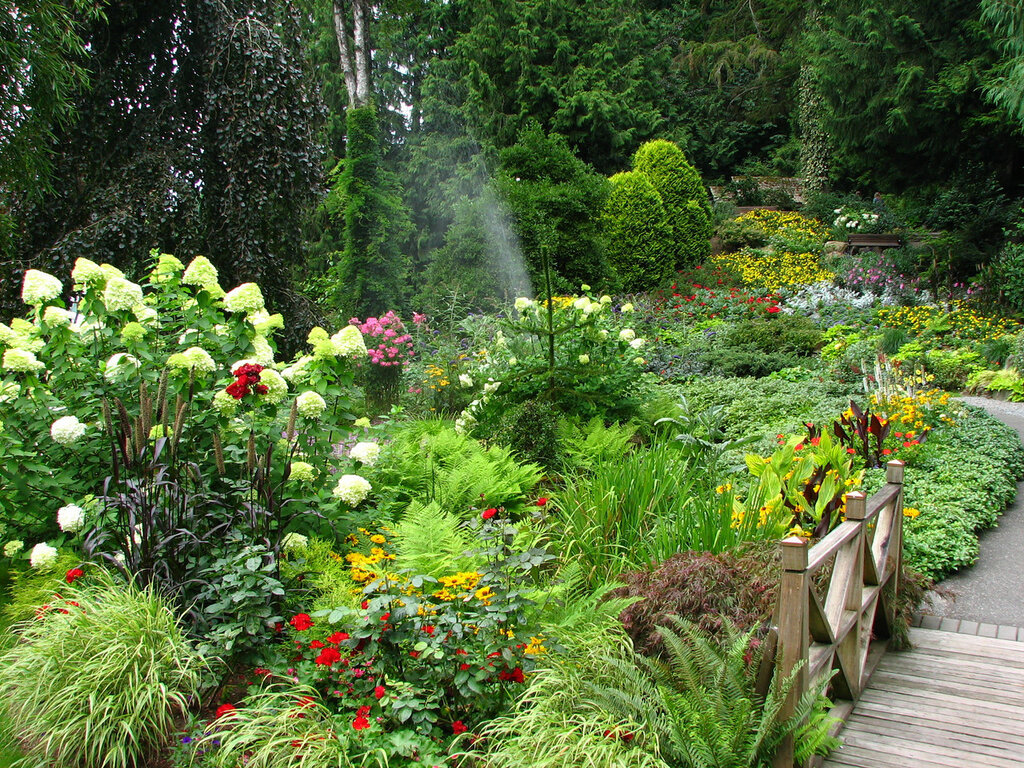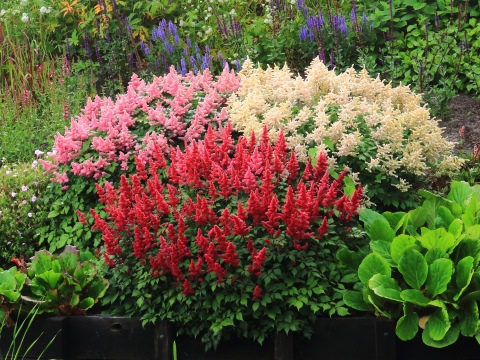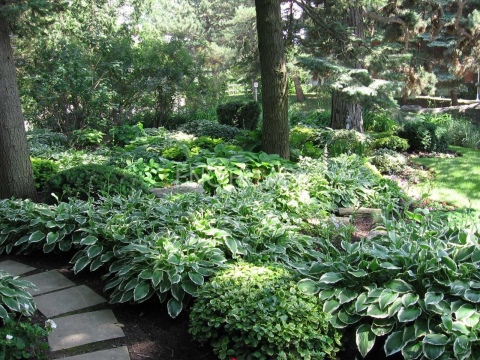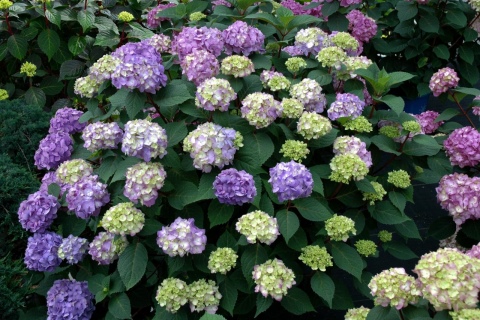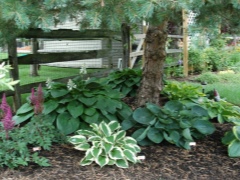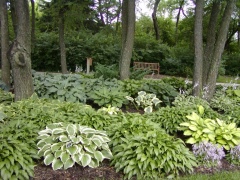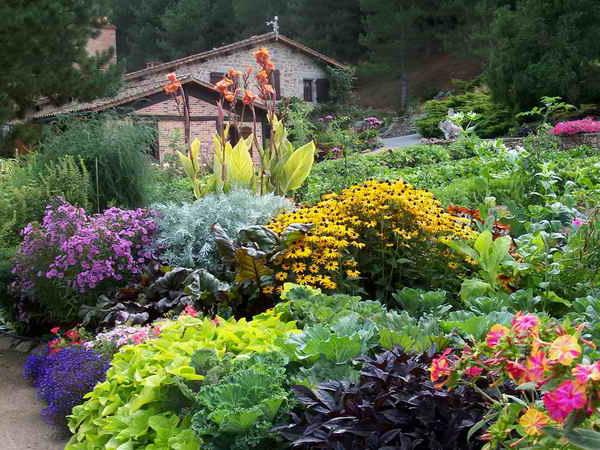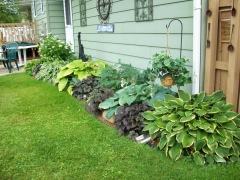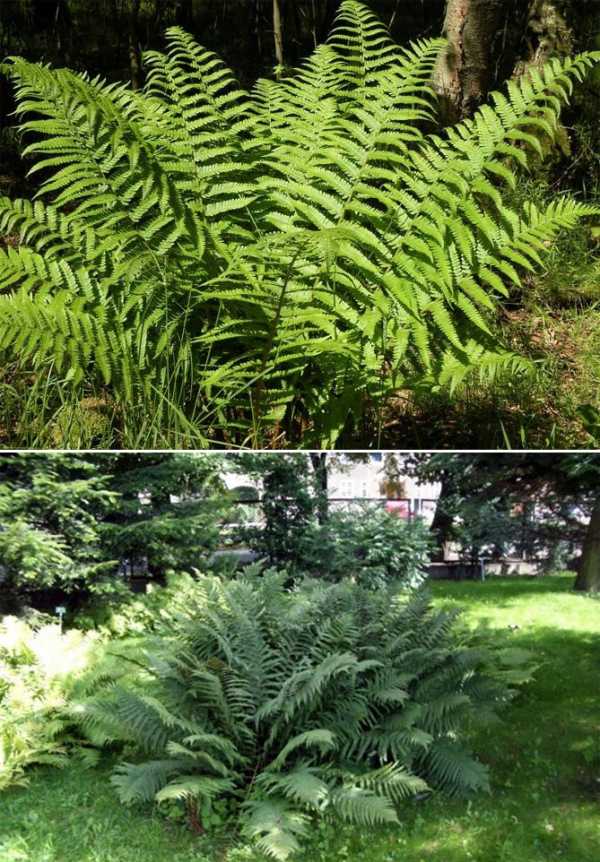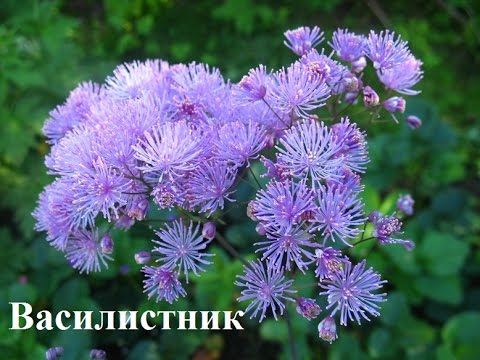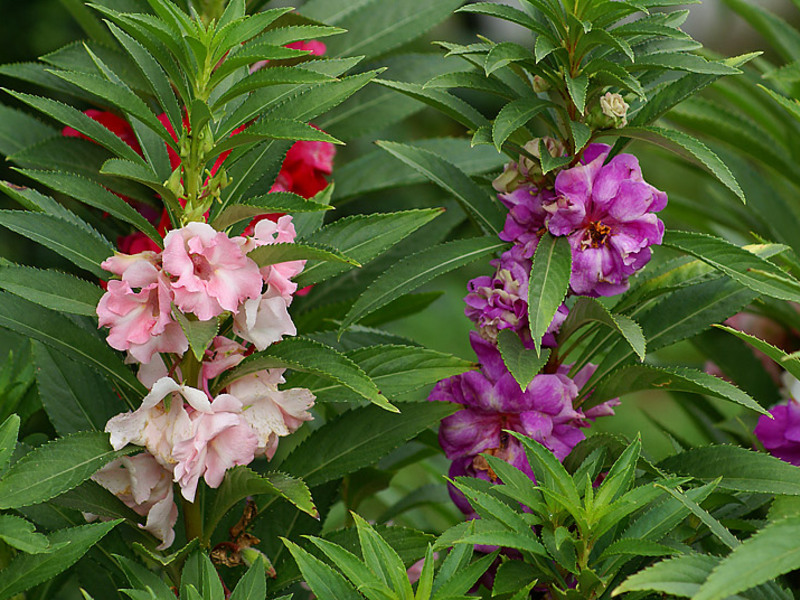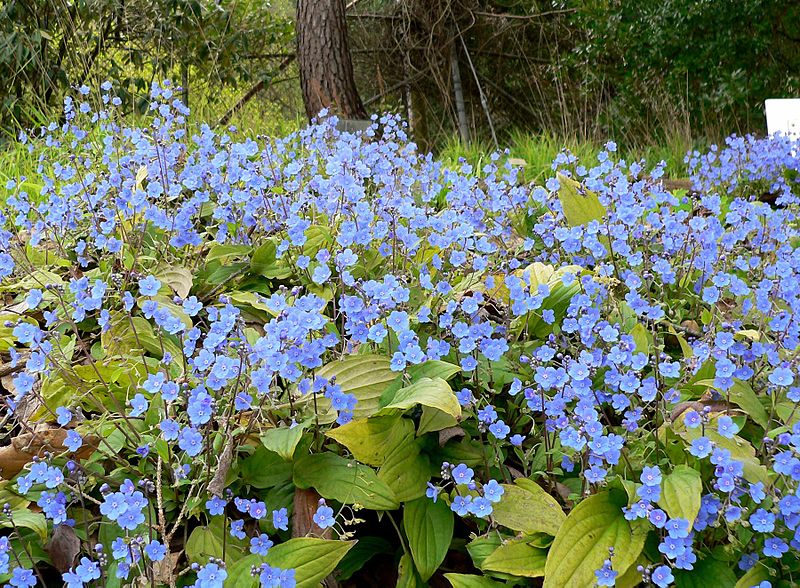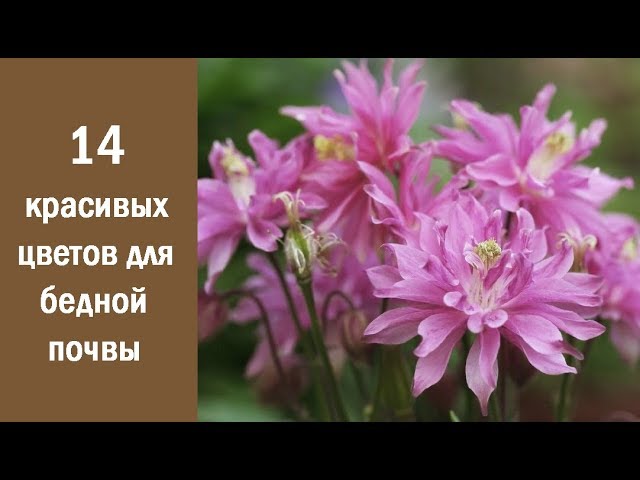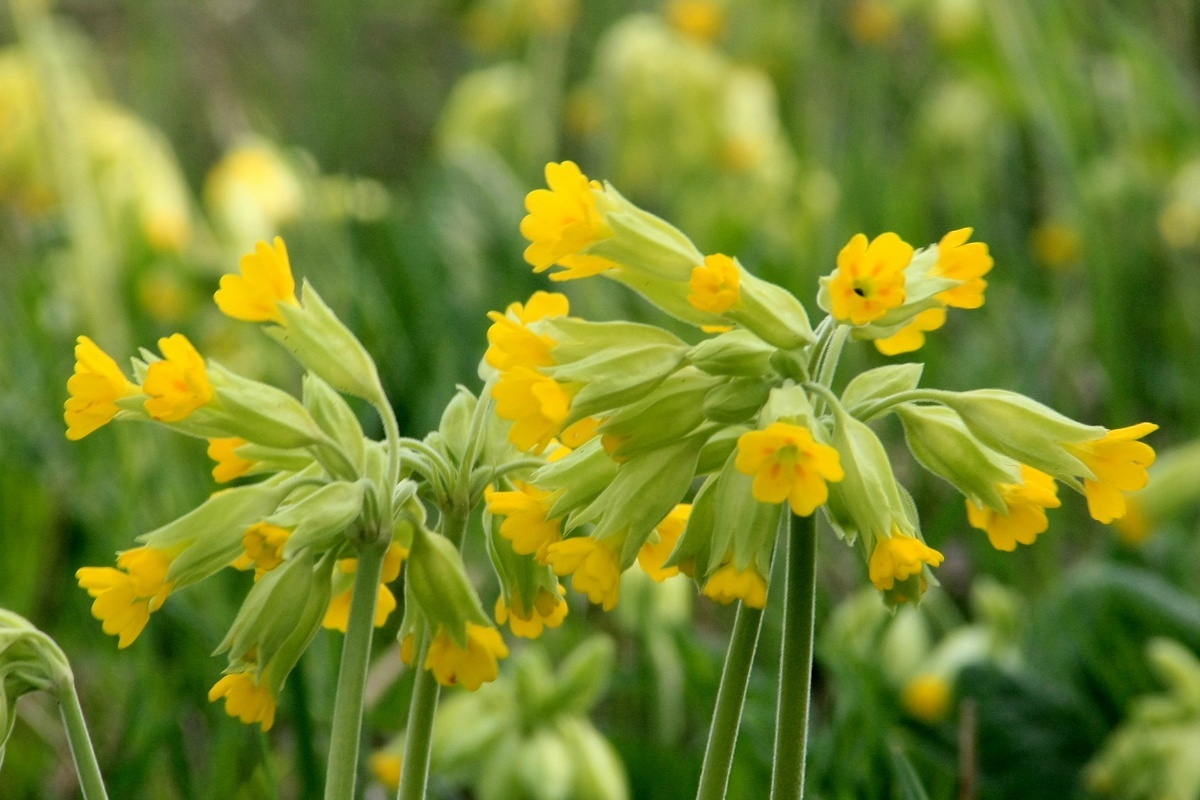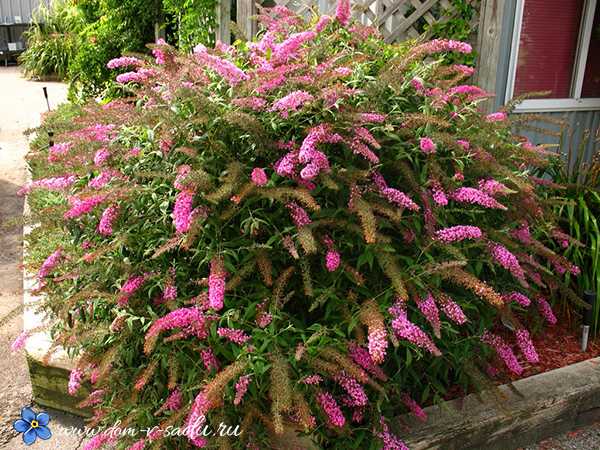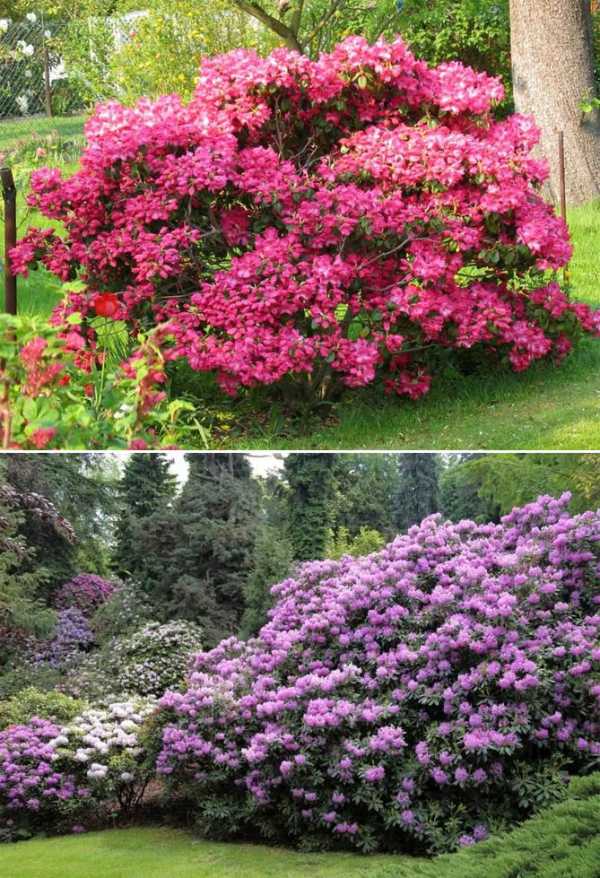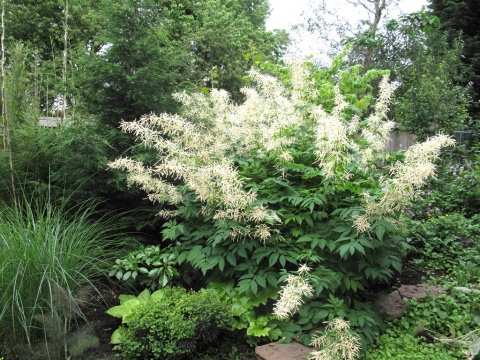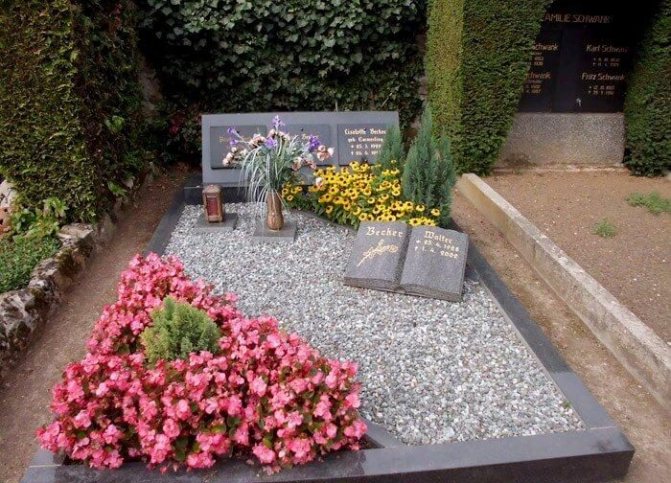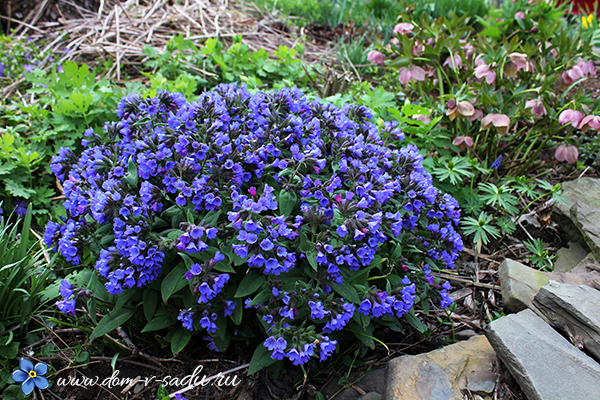Hosta
Photo by the author
The favorite of many gardeners is the Hosta. There are about 40 species in nature, more than 2500 varieties in culture, and thanks to the work of breeders, several dozen new products appear annually. You can find a plant for every taste - miniature and giant, with monochromatic and variegated leaves to varying degrees.
Photo by the author
All hosts are herbaceous stemless plants with thickened rhizomes and filamentous roots. Basal heart-shaped or lanceolate leaves form large (70-80 cm) or low bushes. Purple or white flowers are collected in a tall racemose inflorescence.
Hosts are undemanding, durable, best of all reveal their beauty in partial shade or in the shade in a damp place. Plants do not like frequent transplants, after 2-4 years after planting, they acquire a full-fledged decorative appearance and retain it for a long time. There are known hosta specimens growing in one place for 20-25 years. Hosts can be planted singly or in groups of variegated and monochromatic varieties; they are good companions for most perennials.
The problem of landscaping a wet area is easy to solve by planting several plants there that prefer just such conditions. How do you solve such problems?
Shade-loving shrubs for the garden - choose the right one
First of all, it should be noted that shade-loving perennials can be divided into three groups: flowering, berry and decorative deciduous. All of them have both advantages and disadvantages, but some, in addition to aesthetic beauty, also bring benefits, giving tasty fruits. Experts advise purchasing seedlings only in specialized and proven stores and not giving preference to spontaneous markets, since the quality of such planting material leaves much to be desired. Consider the most popular and popular perennial varieties that are accepted even in the shade:
Shade-loving flowering shrubs:
Rhododendron. A very spectacular and beautiful shrub that has bright flowers and fleshy leaves. This variety is ideal for planting between tall trees where other plants will not survive.
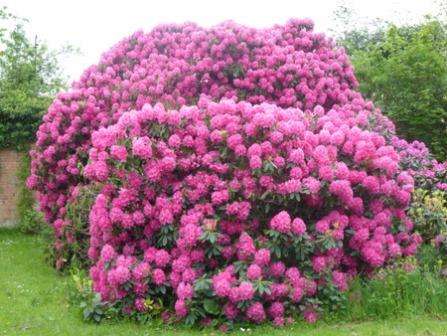 Rhododendron, photo
Rhododendron, photo
Garden jasmine. Quite popular among summer residents. This plant will brighten any area thanks to its lush white bloom and also a pleasant aroma. Its main advantage is the absence of strict requirements for the location and composition of the soil. Jasmine grows well in all conditions, is resistant to drought and will not disappear even in very cold winters. The only thing to consider is regular pruning to keep it in good shape.
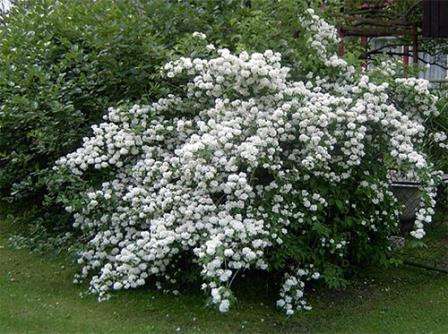 Garden jasmine
Garden jasmine
Berry bushes
This type of perennial is ideal for those who want not only beautiful, but also useful plants to grow in the garden.
Barberry. A famous plant in eastern countries. It grows quickly, does not require complex maintenance, overwinters well and tolerates the absence of moisture. It has beautiful small leaves that change color from green to bright burgundy in the autumn. The main feature of barberry is its delicious berries, which are successfully used in the preparation of various dishes.
 Barberry
Barberry
Gooseberry. Few summer residents know that gooseberries also grow well in the shade, like the sun. In addition, the plant does not need abundant and frequent watering, it tolerates drought well. But you can enjoy not only a green plant, but also delicious and juicy berries, which make an excellent jam.
 Gooseberry
Gooseberry
Hazel.This shrub will only grow well in non-acidic soils, so if your soil does not meet these requirements, add a little sand to it. Beautiful nuts - will become the most awaited fruit in your garden.
 Hazel
Hazel
Ornamental shrubs
This group of plants includes the largest variety of shrubs. If you plant them in your summer cottage, then you can always enjoy the beauty, regardless of the weather and time of the years:
Forsythia. Amazing shrub with bright lemon foliage. Such a plant will look great both in a single planting and in the vicinity of any other shrubs. Does not need complex care, perfectly tolerates winter and lack of moisture.
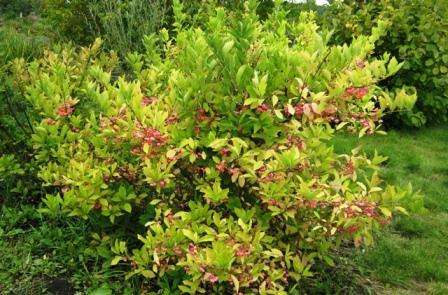 Forsythia
Forsythia
Euonymus. An unpretentious and fast-growing shrub that pleases with its beauty even in winter. Bright leaves will certainly transform and refresh the appearance of your garden, adding grace and a certain charm to it.
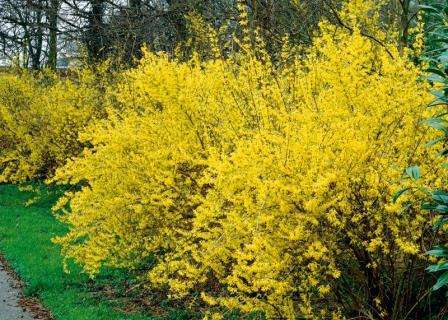 Euonymus
Euonymus
Magonia. A favorite plant of many, which belongs to the species of evergreen shrubs. If you take care of having regular watering, you can definitely enjoy abundant flowering and good growth.
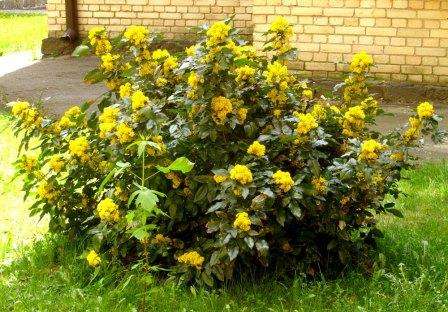 Magonia
Magonia
Perennial shade-loving shrubs for the garden, photos and names of which are presented on our website, will certainly delight and decorate your site. We hope that our tips will help you get what you really want.
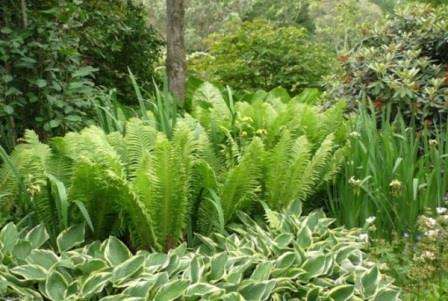
Begonias in a shady garden
Perhaps there is no gardener who has not heard of begonias, since these tropical plants are grown both indoors and outdoors. Begonia is a real inhabitant of shady places, since the direct rays of the sun leave burns on its leaves. There are about 1500 types of these shade-tolerant garden flowers, which have in common that they thrive at temperatures of 17-23 ° C and in the presence of moist soil and air.
If you raise the issue of the disadvantages and advantages of growing begonias in a shady garden, then it should be said that this is an annual crop, that is, planting will have to be carried out every year in the spring. However, many gardeners recommend opting for these plants for decorating terraces of houses, balconies and shady gardens, as their beautiful pink-red flowers delight with flowering for a long time. In addition, planting with seeds is quite simple and does not require any special skills.
Peculiarities
Each garden or summer cottage has shaded areas where sunlight does not get more than 3-4 hours a day. These can be under large trees, near a fence, or on the north and west sides. On such sites, you can put a gazebo or equip a recreation area. However, plants are required to create a comfortable and cozy atmosphere. They not only create additional shade and saturate the air with a pleasant aroma, but also protect from wind and dust. There are two types of plants that can be grown in the shade.
Shade-tolerant. This type includes all species that love sunlight. However, for a comfortable existence, 5-6 hours in the morning or in the afternoon are enough for them. The flowering of such plants is characterized by a short duration and low intensity. This category includes woodlands, peonies, oak anemone.
For shady places, plants are selected, which can be conditionally divided into two types: deciduous and flowers. When choosing them, one should take into account certain features, rules and nuances of site design. Shady areas are suitable for planting ornamental shrubs and evergreen trees, as well as flowers that prefer partial shade. All shade-loving garden plants have one thing in common:
- prefer moist soil;
- can secrete special substances that can inhibit the growth and development of other shrubs and flowers.
Both annuals and perennials are suitable for growing in the shade. To decorate the territory, you can use monogroups and mixed plantings. In this case, the most shade-tolerant flowers can be planted under trees and between rows of shrubs.
Lungwort
These flowers that love shade are familiar to very many from childhood. It is she who grows in the shade of the forest and if you taste the bed of the peduncle, then it will taste sweet. This is where the name of this color comes from. The leaves of this plant are white-spotted, the flowers change color from pink to blue. There are varieties with whole green leaves and a variety of flower colors. Plant height 30 - 40 cm. It can grow strongly and belongs to the ground cover flowers, since the flowers can bush strongly. Lungwort is divided and transplanted once every 3 years. Refers to spring flowering plants. Flowering time: April - May.
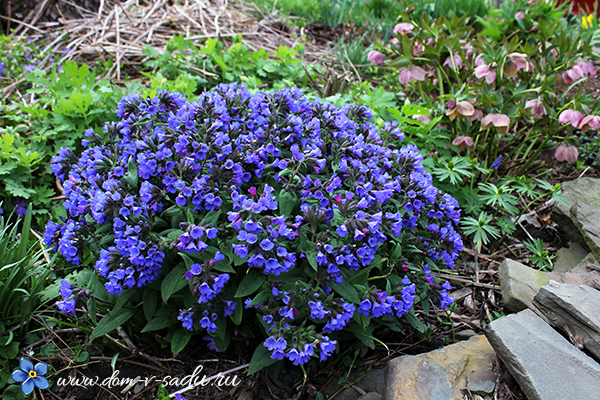
Summer views
Shade-tolerant garden flowers are used to moderate temperatures and ample moisture. Despite the fact that in summer it is too hot for them, it is still possible to grow such plants.
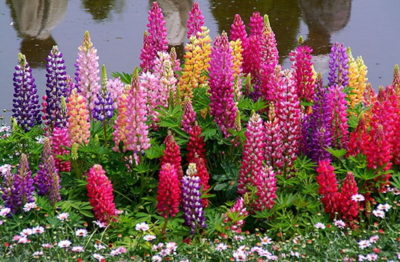
A popular flower is the epidemic. This is a pretty pretty plant of the genus barberry. Typically, it begins to bloom in early June and ends by the end of summer. A good alternative is the fragrant violet. Small buds of bright purple color not only create a gorgeous landscape, but also fill the entire garden with a pleasant and rather delicate aroma. Numerous women's perfumes are made on the basis of violet essential oils. This flower is absolutely unpretentious to the conditions and therefore enjoys wide popularity.
It is impossible not to remember about the beautiful wild peony. It absolutely does not look like an artificially bred pink or white analogue and is well suited for a flower bed. The plant has bright red flowers with a yellow center. The open bud is over 10 cm in diameter. These shade-loving garden flowers are considered the largest option that can be grown in such conditions. The first buds usually open at the end of May.
The most optimal time for shade-loving plants to bloom is late summer and early autumn. There are a huge number of crops that produce buds during such a period. The most profitable flower is black hellebore. The main advantage of the plant is its frost resistance. This is a very useful characteristic, since even at the beginning of September severe frosts can occur, which not all crops can withstand. Another feature of the hellebore is large dark green leaflets.
Black cohosh blooms for a long time. The process continues until the end of autumn. The flower is not afraid of light snow, and in heavy rains, the black cohosh feels even more comfortable than in the heat. And, of course, they love him because in the gloomiest days he is one of the last to please the owners of the garden and passers-by. And if you combine several such autumn flowers correctly, the black cohosh will pass on its best qualities to its “neighbors”, thanks to which the shaded area will bloom until the real winter frosts.
Shade-tolerant garden plants can beautify the area at any time of the year. You just need to organize the correct fit and proper care.
Perennial plants by seasons
The very first in the beginning of spring appear modest, delicate primroses, delighting for a month with their beauty. Such shade-tolerant plants include various varieties of snowdrops, European kandyk, and woodlands. A little later, the liverwort appears, the dubious Jeffersonia, the oak anemone.
At the end of spring, flower beds are decorated with small flowers of soldanella and ruby corollas of common lumbago. Spring celandine creates a gorgeous yellow carpet interspersed with ferns. The brightness of the composition is given by saxifrages, phloxes, hybrid primroses, creating a dense flower cover.
At the beginning of summer, curly lilies and martagon begin to bloom. In the first year, the lily does not differ in luxurious buds, but in the next years it will look great. There are varieties of lilies that reach a height of one and a half meters. This nuance should be taken into account when planting it. Areas with low tree crowns are not suitable for these purposes. Excellent neighbors of lilies are the crested corydalis and spotted bells.
Perennial shade-loving plants do not like the first cold weather, so only a few of them open their buds in the fall. Late garden flowers include palm-shaped kirengeshoma with flowers - bells and decorative large leaves.
Landing in the ground
The process is usually straightforward. First, preparatory work is carried out to prepare the site, soil and seedlings. Then you can proceed directly to planting. If you plant a gooseberry correctly, it will begin to bear fruit in the third year.
Selection of seedlings
It is recommended to purchase planting material in specialized stores.
When buying, it is important to choose the right seedlings.
It is necessary to pay attention to the variety, which should be zoned in the area where it will grow
The seedling must be carefully examined, the size, the root system, the aboveground part must be evaluated. A healthy bush will take root faster and give the first harvest earlier.
Closed-root gooseberry seedlings sold in containers or pots
The requirements for a seedling with an open root system are as follows:
- This is a one-year or two-year-old bush. The thickness of a one-year-old is 7 mm, a two-year-old is about 10 mm.
- It has no mechanical damage.
- There should be at least three skeletal roots. They are dark in color, their length is from 20 to 25 cm. At the break, they are moist and light. Additional small roots should be present (not rotten or withered). The root system is free of growths, holes, spots, signs of disease, damage.
- The seedling should have 2-3 strong shoots about 30 cm high. They are without spots, cracks, outgrowths, peeling, not dry.
When buying young plants in a container, make sure that the leafy shoots are 40 cm long. They should sit tightly in the ground.
Where is better to plant
Gooseberries are light-loving shrubs, so you should choose an open, well-lit place for planting most of the day. It is allowed to place it in partial shade. It is not recommended to plant it in the shade - the harvest will be poor.
For your information!
If the gooseberries are planted in a well-sunlit area, the berries will be sweeter.
It is not recommended to place the plant in a place blown by cold winds. A fence or building wall should be provided for protection.
Ideally, you need to plant a bush on a hill. If this is not possible, a flat area is quite suitable. You can create a hill artificially.
In the area where it is planned to plant a gooseberry bush, groundwater should not be close to the surface. Their minimum depth is 2 m.
Wetlands, lowlands and places where water stagnates are categorically unsuitable for gooseberries. Excessive dampness leads to the development of fungal diseases, rot and death of the plant.
It is important to pay attention to the neighborhood and predecessors. Tomatoes, spicy greens can grow next to gooseberries. The following plants should not be found nearby:
The following plants should not be found nearby:
- currants - has common diseases and pests with gooseberries;
- raspberries - strongly depletes the soil, attracts pests such as moths, weevils, aphids;
- fennel - the root secretes substances that have a bad effect on gooseberries;
- tall trees and bushes - form a shadow, depriving neighboring plants of the required amount of light.
When planting, it matters which crops previously grew on the site. Gooseberries can be planted after potatoes, strawberries, legumes, beets.Extremely undesirable predecessors: raspberries, all types of currants, after which the soil is depleted and deprived of essential nutrients.
Soil quality
Neutral and slightly acidic soils are suitable for gooseberries.
Soil by mechanical composition:
| Soil types | + (suitable) / - (not suitable) |
| Loam | + |
| Sandstone | + |
| Sandy | – |
| Clayey | – |
Sandy soils retain moisture too poorly. Clay - heavy, so the root system does not have enough air.
FAQ
How to deoxidize the soil?
If the acidity needs to be reduced, before the autumn digging of the site, lime should be added to the ground, distributing it in an even layer over the surface. In addition to lime, you can use chalk, ash, dolomite flour, complex deoxidizers, green manure.
How to acidify the soil?
If the soil is alkaline, it can be acidified with manure, humus, coniferous sawdust, horse peat
Agents such as potassium sulfate, ammonium nitrate, ferrous sulfate act more quickly, but they should be applied with caution
How to improve the land?
In sandy soil for greater moisture capacity, you need to add a clay substrate. Sand will need to be added to heavy clay soil to make it looser.
Shade-tolerant types of flowers
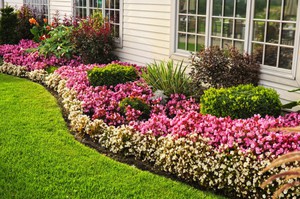 They love the shadow of the violet. Violet is a low fragrant flower that blooms twice a year (April-May) and in autumn.
They love the shadow of the violet. Violet is a low fragrant flower that blooms twice a year (April-May) and in autumn.
Shade-tolerant beauty - kupena (fragrant, graceful) is a very rare plant in our gardens and vegetable gardens, but she did not deserve it. This is a very beautiful flower that blooms with white bells in the first half of summer. And no flower can interrupt his smell. Its advantage: it can grow and reproduce in full shade. Reproduction takes place by seeds or roots. Moisture-loving plant. Propagated by root cuttings in spring. As soon as the flower fades, the aerial part dies off.
For shady corners, astilbe is suitable. It blooms from the beginning until the end of summer with small inflorescences of different colors - cream, white, pink and all red shades. A moisture-loving plant, in dry weather requires abundant watering. For the winter, the stems are cut, and the roots are covered with dry foliage. Its growth buds are located close to the soil surface, and therefore it should be protected from frost.
Daylilies and hemerocalis can withstand a little shade; they love fertile soil and moisture. Currently, hybrids have been bred with their multi-colored colors - from white to almost black.
Annual shade-tolerant plants
From annual shade-loving plants, they feel full - fragrant tobacco, nasturtium, lobelia.
Greens and herbs
- Fern. The most shade-tolerant plant. More than 50 species of this ancient plant grow on the territory of Russia. They have been growing since the days of the dinosaurs. In the garden, gardeners usually use common fern, in which leaves resembling feathers can reach up to 1.5 m in height. They cannot stand drought, so they should be watered more often.
- Lianas are shade-tolerant. This is actinidia-kolomikta, Chinese magnolia vine. They always bloom well, even in heavy shade. Also very popular among gardeners are girlish grapes (tri-pointed and five-leafed ornamental culture). An excellent climbing annual plant is impomoea, which has large bell-shaped flowers of different colors.
Conifers and shrubs
 A lot of shrubs, including conifers, are adapted to the lack of sun. The most popular of this species are rhododendrons. In the wild, they grow on forest edges. In the shade, you can plant a creeping form of evergreen box trees - they will add shine to the shade. Mahonia holly will look very beautiful in the shade and will bloom beautifully and bear fruit with blue berries.
A lot of shrubs, including conifers, are adapted to the lack of sun. The most popular of this species are rhododendrons. In the wild, they grow on forest edges. In the shade, you can plant a creeping form of evergreen box trees - they will add shine to the shade. Mahonia holly will look very beautiful in the shade and will bloom beautifully and bear fruit with blue berries.
The hydrangea feels great in the shade. This is the most luxurious shrub that can winter with us.
With the northern exposure, the berry yew feels very well.Its colors range from yellow to almost black. There are quite a few varieties of this plant, there are even those that do not grow large.
There are many more shade-tolerant conifers - larch, fir and a huge number of juniper varieties.
When fruit trees grow large in the garden, flowers and shrubs should not be neglected. Nowadays there are a lot of them: shade-loving and shade-tolerant. And this is just salvation from dull desolation. And you should never bury your dream of blooming flower beds.
Shade-loving flowers for gardens
